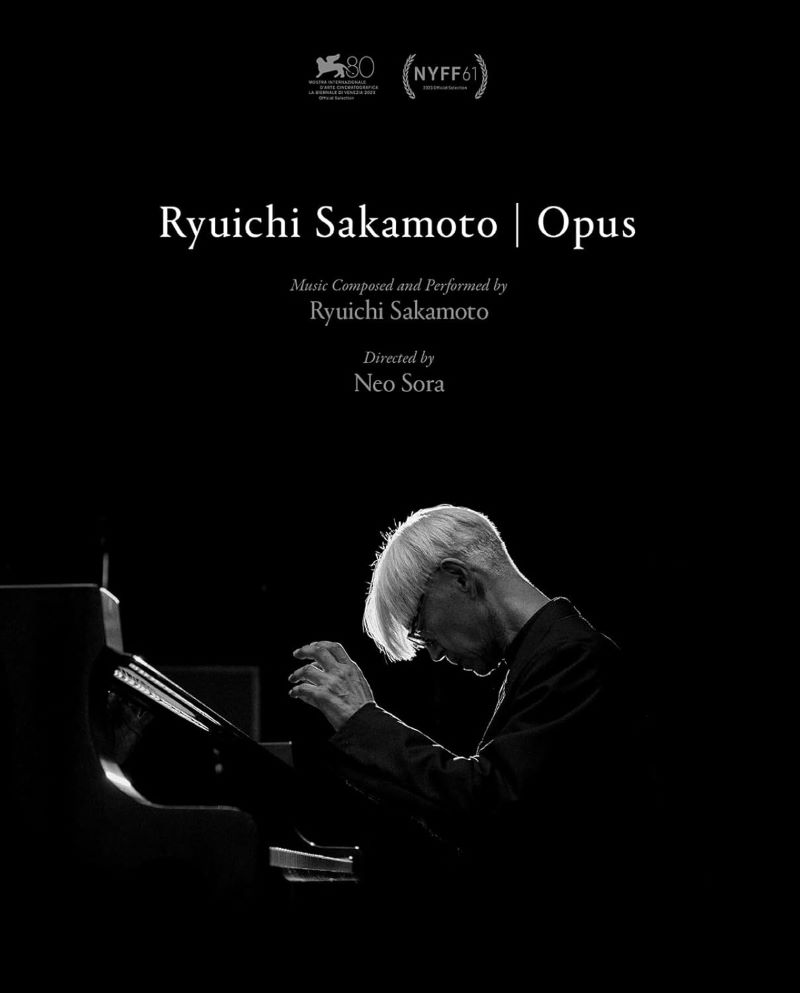
Not to be confused with Ryuichi Sakamoto: Coda, the 2017 documentary about the Japanese composer’s life and career, Opus is a solo concert film produced a few months before his death in 2023. The film shows Sakamoto working his way through twenty of his pieces at a piano on an otherwise empty soundstage, a transfixing meditation on both the impermanence of life and the permanence of art. The pieces represent output from his entire career, including his early Yellow Magic Orchestra days, through his film scores for The Last Emperor and Merry Christmas, Mr. Lawrence, and all the way through to his final album.
Buy Ryuichi Sakamoto | Opus Blu-rayMuch like David Bowie, his fellow cast member from Mr. Lawrence, Sakamoto knew he was dying of cancer and wanted to complete a final artistic project before his demise. In Bowie’s case, it was his Blackstar album released two days before his death. For Sakamoto, it was his final new album, 12, as well as this concert film covering the breadth of his career. The pieces were curated and sequenced by Sakamoto, a final piano recital that allows him to speak volumes without really ever uttering a word, a mesmerizing coda to his monumental artistic life.
Sakamoto plays with quiet resolve, his emotions clearly playing across his face as he abandons himself to his music. When pieces briefly require only one hand at time, he can be seen conducting himself with the other, his free hand wringing passion from the performance of the other. In one piece, he even explores off the beaten path, experimenting and restarting as he finds his way back to the central melody. Director and Sakamoto’s son, Neo Sora, reveals in the bonus feature that he later filmed a perfect take of the track but chose to leave the experimental version, demonstrating Sakamoto’s restless pursuit of his muse.
Aside from Sakamoto’s superb musicianship, the film is brilliantly shot in artistically lit black and white by cinematographer Bill Kirstein, with the lighting shifting slightly throughout the film to represent the cycle of a full day. Multiple camera angles are employed, with slow pans and zooms offering excellent coverage of the performance without ever calling attention to the camera’s presence. Due to Sakamoto’s weakened state, they shot only 2-4 pieces per day over an 8-day shoot, but the final edit flows like one uninterrupted composition. This is in no way a lesser performance, with the slightly frail but still vital Sakamoto exhibiting full control of his musical abilities throughout the film.
The Blu-ray presents the widescreen film with precise detail, with the exceptional contrast of the beautifully lit black and white film remaining fully defined and consistent throughout every shot. Sound is presented in Dolby Atmos, fully embedding viewers on the soundstage with Sakamoto. Sora insisted on including Sakamoto’s subtle environmental elements in the final mix, with his breathing, fabric shifts, and fingernail contact with keys heightening the organic feel of the soundtrack.
Aside from the trailer, the only other bonus feature is an interview with Sora and Kirstein where they discuss the process for setting up and capturing the performance, providing fascinating detail for what must have been an especially emotional shoot for Sora as he watched his father begin to fade out before his eyes.
As a final artistic statement, it’s hard to imagine how the film could have been any better, with Sakamoto playing his own music for the last time, saying goodbye to his works and his fans. The closing post-credit image of the film sums it up perfectly: ars longa, vita brevis, meaning art is long, life is short. Sakamoto may be gone, but his art will live on forever.